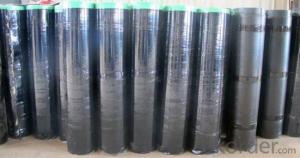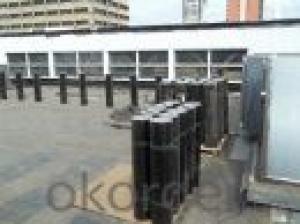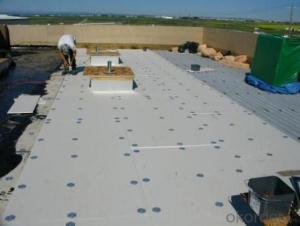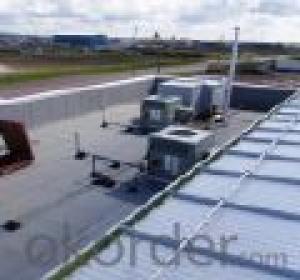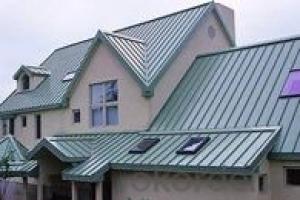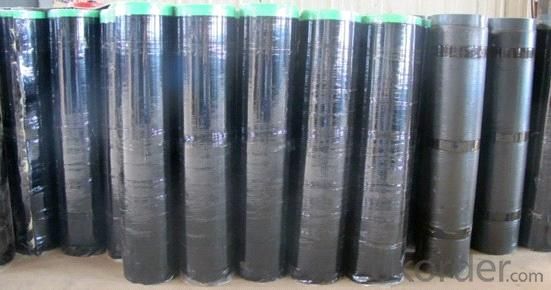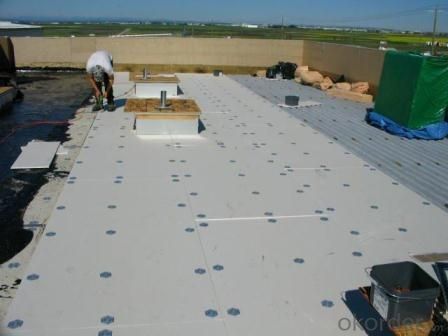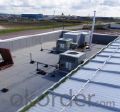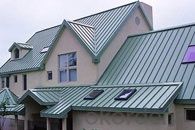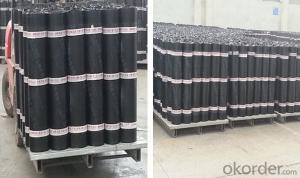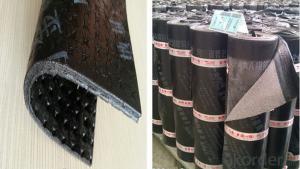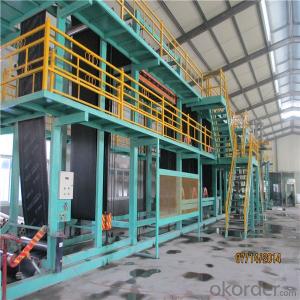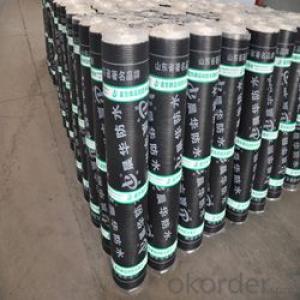SBS Bitumen Polyester Waterproofing Membrane
- Loading Port:
- Shanghai
- Payment Terms:
- TT OR LC
- Min Order Qty:
- 1000 m²
- Supply Capability:
- 200000 m²/month
OKorder Service Pledge
OKorder Financial Service
You Might Also Like
Product description
SBS Waterproof Material Self Adhesive Aluminium Membrane is produced with SBS elastomer and bitumen as raw materials, using polyethylene film.
Aluminium foil coated on the upward or no file(both side self-adhesive) while self-adhesive protection layer on the downward
surface.It has a widely prospect new contruction waterproof materials. Good self-adhesion, no leaking,cold flexibility,especially
in self-adhesion. That is unque product in waterproof and application.
Packaging & Shipping
| Packaging Details: | in bulk or standard export pallect package |
| Delivery Detail: | within 10 days after receiving the deposit |
.
Advantagee
1.1m or 2m width, we can produce as your requirment
2.Simple and Efficient Construct, Greatly Saving Construct Period
3.Advanced Production Line
4.Excellent Comprehensive Physical Properties
5.Stable Dimension
6.Wide Adaptability of Facing Material
7. Cold-applied construction with no open flame and self-adhesion without bonding agent make it safe, low- carbon, environmental, and economical.
8. Excellent adhesive performance guarantees the integrity of waterproof layer.
9. Good rubber elasticity, elongation and shear stress.
10. Good low-temperature property.
Application method
1) Widely used in the industrial and civil building roofing, underground, pool, tunnel, wooden and metal roofing.
2) Specially applied in the oil depot chemical factory, garment factory, and granary.
3) Especially used in cold places.
4) Tape used for sealing all construction material surfaces.
Our Services
1.If you need some advises for the waterproof construction, we have the best engineer to serve you.
2.We send the free samples to you by freight collect.
3.We will guarantee the quality and the competitive price.
4.We will give you the best packaging and safe shipping.
5.If any problem, we will always be right here waiting for you.
Storage:
Different types or specifications of products should be separated, not mixed.
Keep it dry and ventilated, protected from the sun or rain.
Storage temperature should never be higher than 45 °C. Pile up the membranes flatwise whose stockpile height never exceeds five layers. One layer is guaranteed if it is placed vertically.
Prevent it from inclination or In the process of transportation, it should be lying in case of inclination or lateral pressure. If necessary, cover it with felt-cloth.
Storage time is at least one year from manufacture date on if the product is under normal operation of storage.
Technical Parameters
Item | Index | ||||||
1 | Thickness of resin layer of the middle fabric ,mm≥ | - | - | 0.40 | 0.40 | 0.40 | |
2 | Tensile performance | Max tensile strength,N/cm ≥ | - | 120 | 250 | - | 120 |
Tensile strength,NPa ≥ | 10 | - | -10 | - | - | ||
Max elongation% ≥ | - | - | 15 | - | - | ||
Breaking elongation % ≥ | 200 | 150 | - | 200 | 100 | ||
3 | Heat treatment size change rate%≤ | 2.0 | 1.0 | 0.5 | 0.1 | 0.1 | |
4 | Cold bonding | -25°c No cracks | |||||
5 | Watertightness | 0.3mPa,2h waterproof | |||||
product show
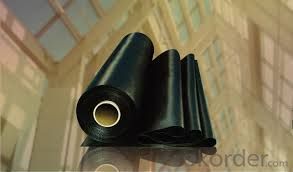
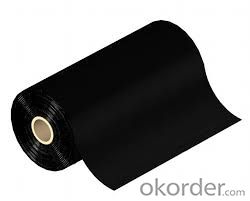
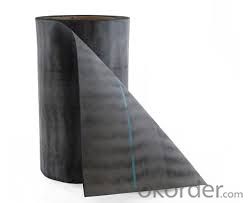
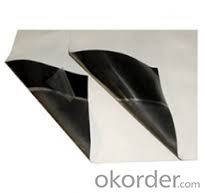
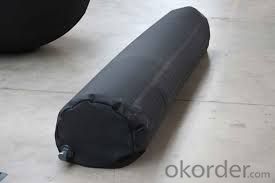
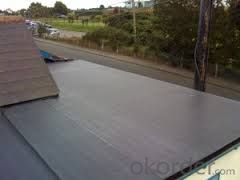
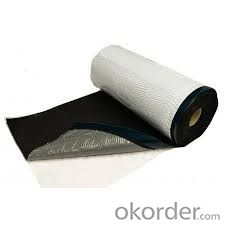

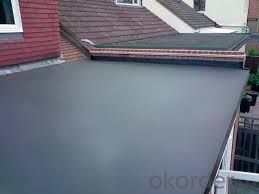
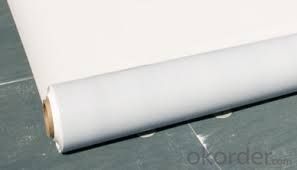
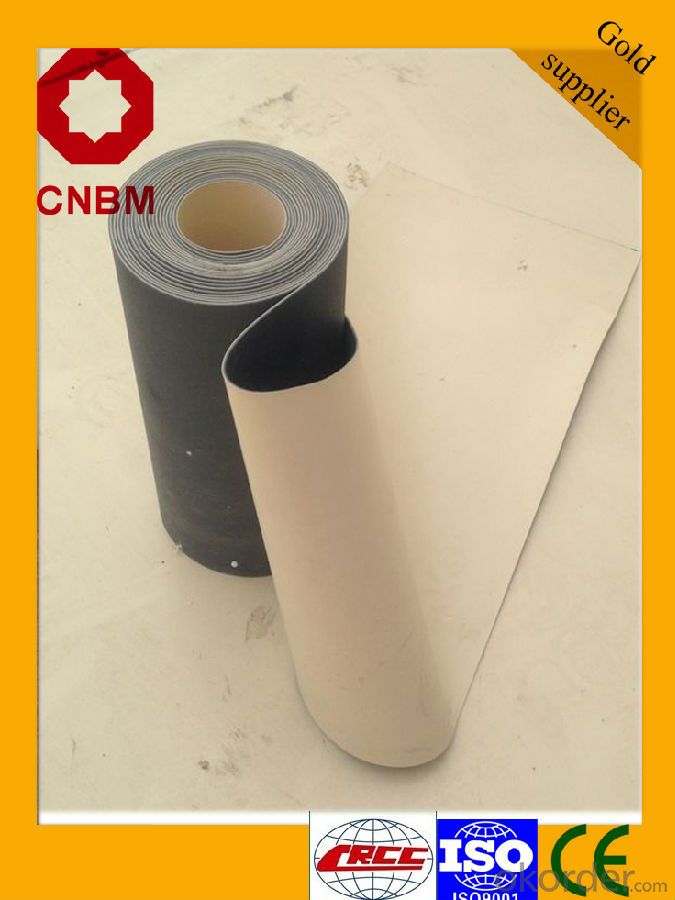
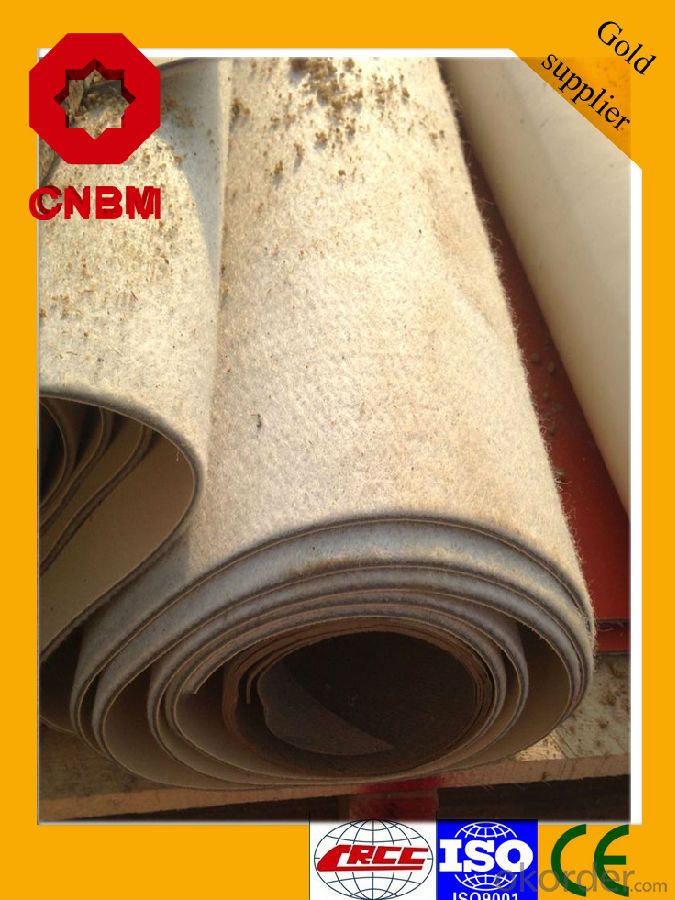

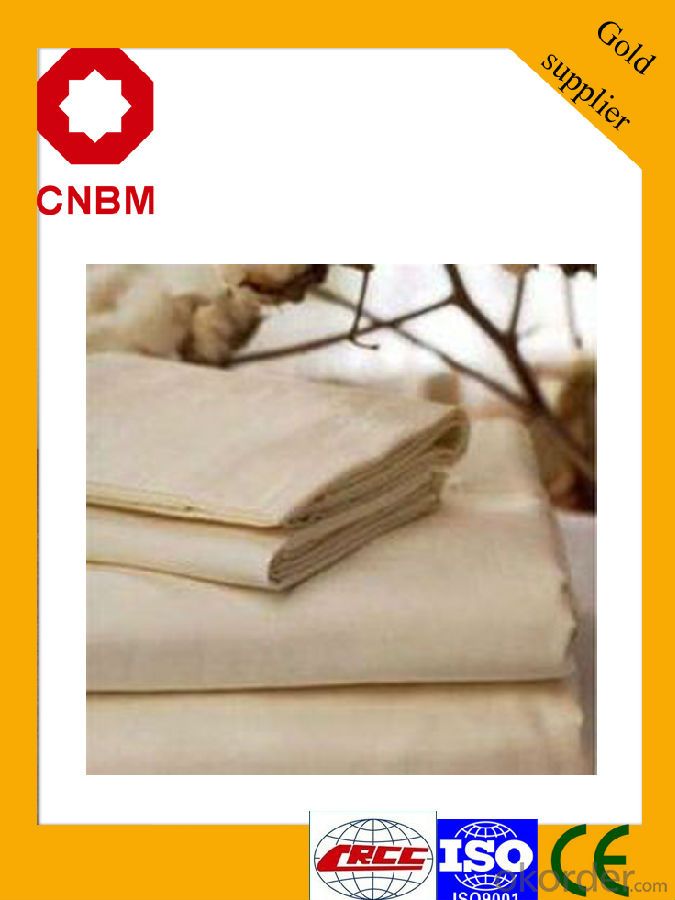
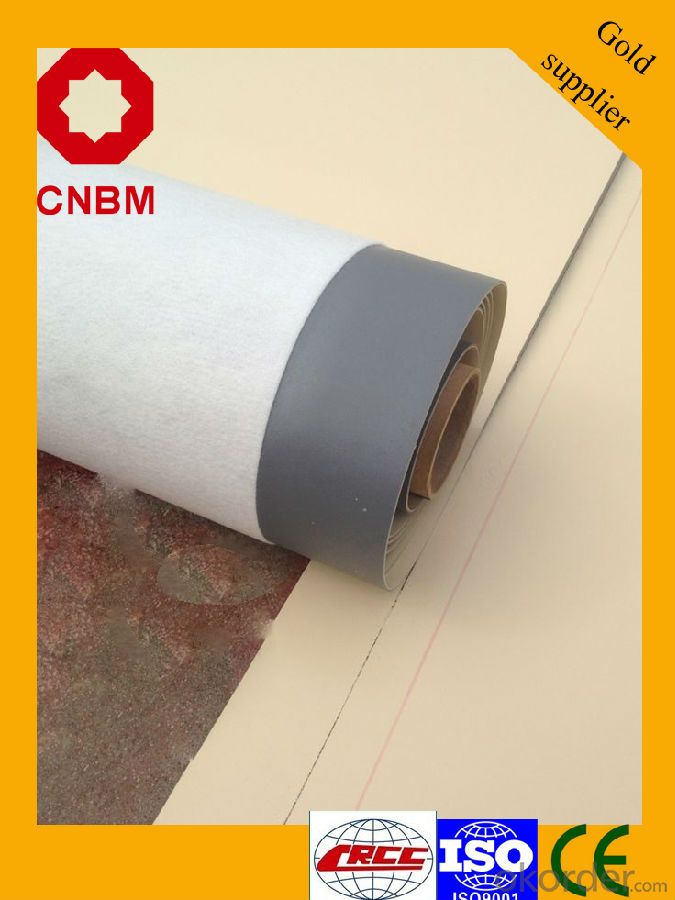
FAQ
Q: What's the de6abf1fe186f8d58506cbcfe46eed814d.jpglivery time ?
A: 3-5 days for 1-600 rolls, 10-15 days for container.
Q: What's the payment terms ?
A: TT/LC
Q: How do you make replacement with quality problems ?
A: New replacement will be packed into your next order or send to you directly after receive video or photo about quality problems.
- Q: Can a waterproofing membrane be used on precast lead surfaces?
- Precast lead surfaces can benefit from the application of a waterproofing membrane. These membranes are commonly used to safeguard various types of surfaces, such as precast concrete, metal, or lead surfaces. By forming a reliable barrier against water penetration, these membranes effectively keep the underlying structure dry and well-protected. To achieve optimal results, it is crucial to thoroughly clean, dry, and remove any contaminants from the precast lead surface before applying the waterproofing membrane. This step promotes proper adhesion and enhances the membrane's ability to prevent water infiltration. For specific guidance on using a waterproofing membrane on precast lead surfaces, it is advisable to seek professional advice or consult the manufacturer's guidelines.
- Q: What is the preferred level of waterproofing?
- 3, roof 3 waterproof: Application: general building; Waterproof layer of reasonable use of life: 10 years; Waterproof layer selection of materials: should choose three asphalt four oil asphalt waterproofing membrane, polymer modified asphalt waterproofing membrane, synthetic polymer waterproofing membrane, metal sheet, polymer modified asphalt waterproof coating, synthetic polymer waterproof coating , Fine stone concrete, flat tile, felt tile and other materials;
- Q: Can a waterproofing membrane be used on plywood surfaces?
- Yes, a waterproofing membrane can be used on plywood surfaces. Plywood is a commonly used material for construction, including outdoor projects such as decks and balconies. However, plywood is not naturally waterproof and can be susceptible to moisture damage over time. To protect plywood surfaces from water damage, a waterproofing membrane can be applied. This membrane acts as a barrier, preventing water from seeping into the plywood and causing rot or decay. There are various types of waterproofing membranes available, including liquid-applied membranes, sheet membranes, and peel-and-stick membranes. These membranes are designed to adhere to the surface of the plywood and create a watertight seal. It is important to follow the manufacturer's instructions for proper application and ensure that the plywood surface is clean and dry before applying the membrane. By using a waterproofing membrane, plywood surfaces can be effectively protected from water damage, extending their lifespan and maintaining their structural integrity.
- Q: Is a waterproofing membrane resistant to hydrocarbons or oil spills?
- Typically, a waterproofing membrane exhibits resistance against hydrocarbons and oil spills. Its primary purpose is to create a barrier that prevents water penetration and protects the underlying surfaces from moisture damage. These membranes are commonly made from materials such as modified bitumen, polyurethane, or PVC, all of which possess excellent chemical resistance, including towards hydrocarbons and oil. This resistance guarantees that the membrane remains intact and effective even when exposed to substances like oil spills or hydrocarbon-based liquids. However, it is crucial to note that the specific resistance may vary depending on the type and quality of the selected waterproofing membrane. Therefore, it is essential to choose a membrane that is specifically engineered to withstand the intended environment and potential chemical exposures.
- Q: Can a waterproofing membrane be used for plant rooms and mechanical equipment areas?
- Plant rooms and mechanical equipment areas can benefit from the use of a waterproofing membrane. It is necessary to waterproof these areas in order to safeguard the equipment and surrounding structures against water damage. A waterproofing membrane serves as a commonly implemented solution for this purpose. By forming a barrier, it effectively prevents water infiltration into the plant rooms and mechanical equipment areas, thereby ensuring the equipment remains dry and protected. Moreover, this membrane aids in averting moisture-related problems like the growth of mold and mildew, which can be detrimental to both the equipment's functionality and the overall operation of the plant room. Ultimately, incorporating a waterproofing membrane in plant rooms and mechanical equipment areas proves to be a dependable and efficacious approach for maintaining the longevity and performance of the equipment and structures.
- Q: Sbs waterproofing membrane can make bathroom waterproof?
- If used in roof waterproofing, it is recommended to use ASPP modified asphalt waterproofing membrane, because it is suitable for high temperature, there is strong solar radiation in the building waterproof.
- Q: How does a waterproofing membrane adhere to a surface?
- A waterproofing membrane adheres to a surface through a combination of mechanical and chemical bonding. The process typically involves the application of an adhesive or bonding agent to create a strong and durable connection between the membrane and the surface it is being applied to. Mechanical bonding occurs when the membrane is physically held in place by the irregularities and imperfections on the surface. This can be further enhanced through the use of mechanical fasteners such as screws or nails, which help secure the membrane in place. These mechanical bonds provide initial stability and prevent the membrane from shifting or peeling off. Chemical bonding, on the other hand, involves the use of adhesive materials specifically designed for waterproofing applications. These adhesives are typically applied to the surface and the backside of the membrane. Once the membrane is pressed onto the surface, the adhesive chemically reacts with the surface and the membrane, creating a strong bond. The effectiveness of the adhesive is influenced by factors such as surface preparation, environmental conditions, and the type of membrane and adhesive being used. Proper surface preparation, which may involve cleaning, priming, or leveling the surface, ensures that there are no contaminants or unevenness that could compromise the bond. In summary, a waterproofing membrane adheres to a surface through a combination of mechanical and chemical bonding. The mechanical bonds provide initial stability, while the adhesive materials create a durable and long-lasting connection between the membrane and the surface.
- Q: Can a waterproofing membrane be used on precast brick surfaces?
- Precast brick surfaces are vulnerable to water penetration, which can lead to structural damage and the growth of mold or mildew. To prevent this, a waterproofing membrane can be utilized. The membrane, typically composed of rubberized asphalt, modified bitumen, or polyurethane, is a flexible and durable material. It is applied to the surface using a brush or roller, forming a seamless layer that effectively blocks water infiltration into the bricks. Moreover, apart from its water-resistant properties, the waterproofing membrane also enhances the thermal insulation and longevity of the precast brick surfaces. However, it is crucial to ensure that the precast bricks are thoroughly cleaned, dried, and properly prepared prior to the application of the membrane for optimal adhesion and efficacy.
- Q: Is a waterproofing membrane effective at preventing water leaks?
- Yes, a waterproofing membrane is highly effective at preventing water leaks. A waterproofing membrane is a thin layer of material that is applied to surfaces such as roofs, walls, or foundations to create a barrier against water penetration. This membrane acts as a protective shield, preventing water from seeping through and causing leaks. It is designed to be highly resistant to water, ensuring that it remains intact even in the presence of heavy rainfall or moisture. Additionally, waterproofing membranes are flexible, allowing them to adapt to the movement of the underlying structure without compromising their effectiveness. Whether used in construction, plumbing, or even in everyday products like shower curtains, a waterproofing membrane plays a crucial role in preventing water leaks and maintaining a dry and safe environment.
- Q: Can a waterproofing membrane be used on roofs?
- Roofs can indeed benefit from the usage of a waterproofing membrane. It is quite common to find these membranes on flat or low-slope roofs, as they offer an extra layer of protection against water infiltration. The materials used for these membranes are typically synthetic, including modified bitumen, EPDM, PVC, or TPO. These materials are chosen for their durability, flexibility, and ability to resist UV rays, weathering, and ponding water. When installed correctly, a waterproofing membrane effectively safeguards the underlying roof structure by preventing water from seeping in, thus safeguarding the building from potential leaks and water damage.
Send your message to us
SBS Bitumen Polyester Waterproofing Membrane
- Loading Port:
- Shanghai
- Payment Terms:
- TT OR LC
- Min Order Qty:
- 1000 m²
- Supply Capability:
- 200000 m²/month
OKorder Service Pledge
OKorder Financial Service
Similar products
Hot products
Hot Searches
Related keywords
